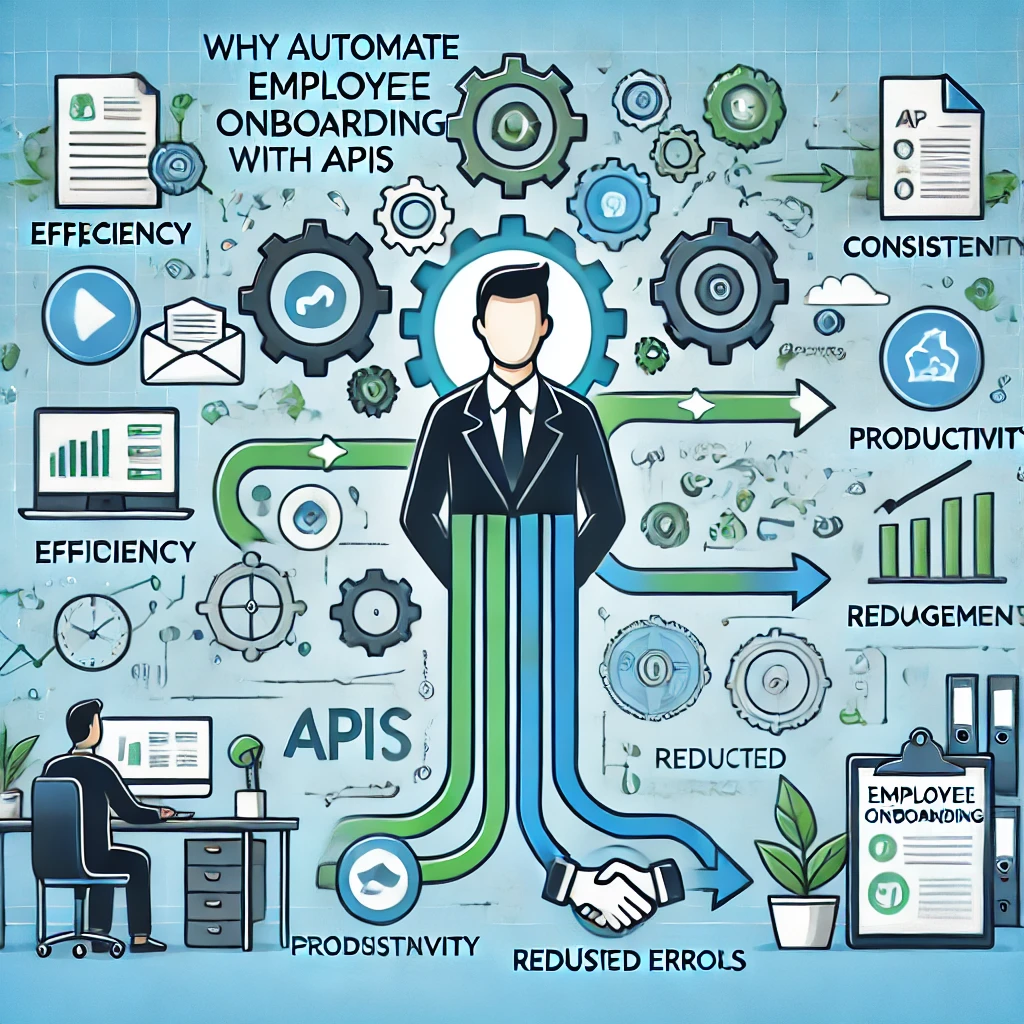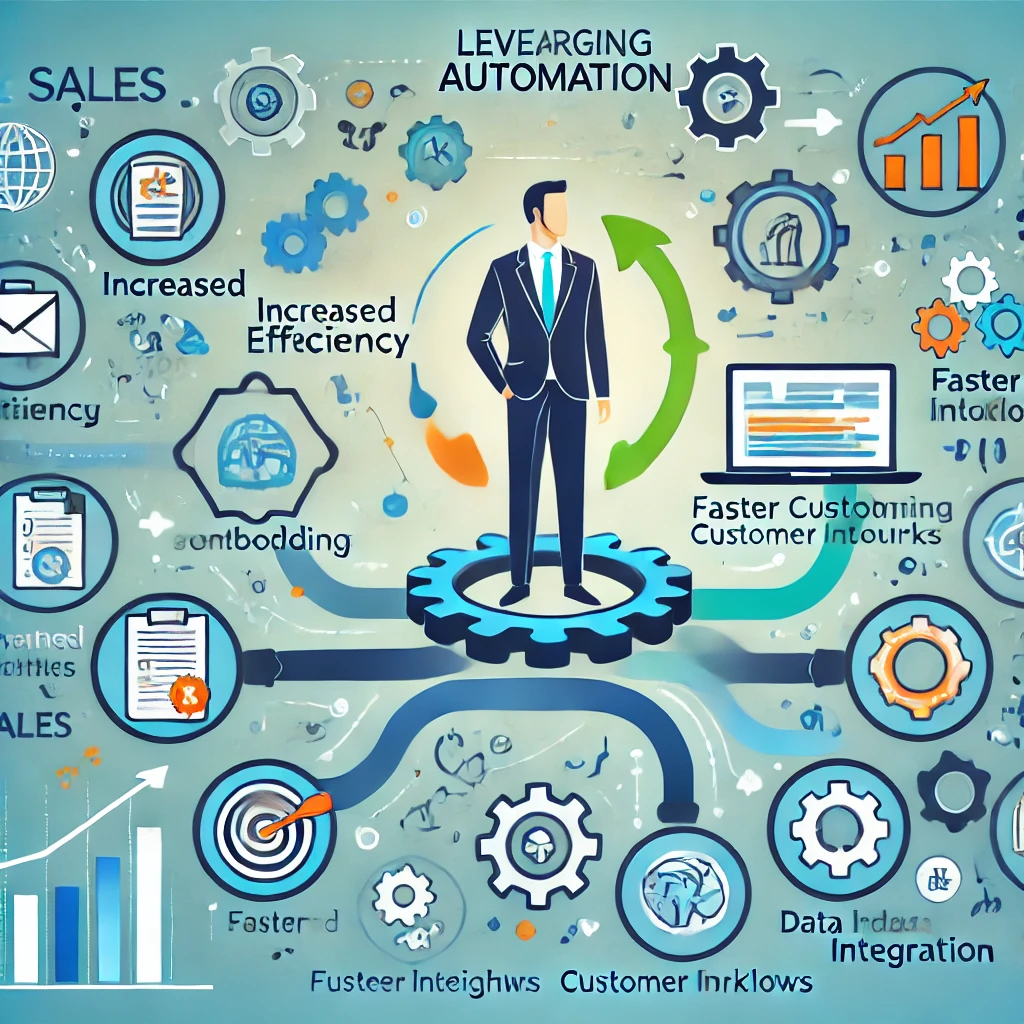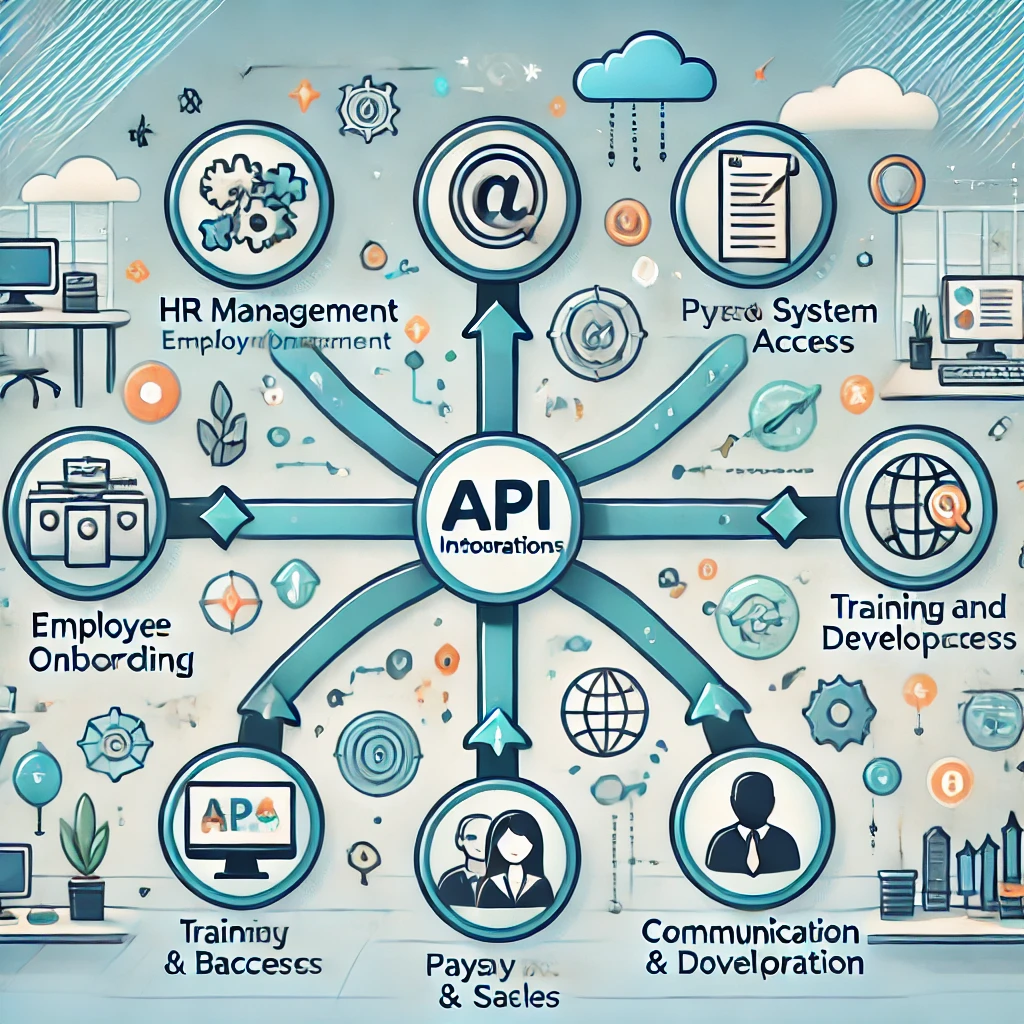Automate Employee Onboarding to help new hires thrive from the outset. When done effectively, onboarding can positively impact employee engagement, productivity, and overall satisfaction. In today’s fast-paced business environment, automating parts of the onboarding process with API integrations not only saves time and resources but also creates a consistent, welcoming experience for each new hire. By streamlining essential processes like data entry, system access, and training, API integrations enable employees to start strong, ultimately boosting sales and productivity.
In this blog, we explore 7 Powerful Ways API Automation Transforms Customer Service Response Time. API automation plays a game-changing role in improving customer service efficiency by connecting systems, streamlining workflows, and enabling rapid data exchange. From real-time customer data access to automated responses, we dive into actionable strategies that reduce wait times, enhance customer satisfaction, and drive seamless support experiences. By integrating these API-driven solutions, companies can ensure quicker, more accurate responses that meet today’s customer expectations for fast, personalized service.
Table of Contents
What Are API Integrations and How Do They Work?
API (Application Programming Interface) integrations serve as connectors that allow various software applications to communicate by sharing data and actions seamlessly. This capability can be particularly useful for employee onboarding, where different tools such as HR software, email systems, and training platforms need to work in unison. With API integrations, onboarding workflows can automatically create employee profiles, manage training assignments, and set up IT access. This level of automation eliminates repetitive tasks, reducing errors and streamlining data transfer to keep new hires engaged and equipped for success.
Why Automate Employee Onboarding with APIs is Essential
Automated onboarding delivers more than just convenience; it transforms how new hires experience your company from day one. Traditional onboarding often involves extensive paperwork, manual data entry, and delayed access to necessary tools. With API-powered automation, companies can:
- Reduce Time and Manual Effort: Automate data syncing across HR, payroll, and communication tools, reducing repetitive tasks and human error.
- Ensure Consistency: Every new hire receives a standardized, high-quality experience, reinforcing a positive perception of the company’s structure and professionalism.
- Boost Engagement: Instant access to resources, training, and communication channels enables new hires to begin learning and engaging without delays.
- Accelerate Sales Impact: Automated onboarding provides sales teams with the tools they need to engage with clients and contribute to revenue targets sooner.

6 API Integrations for a Seamless Onboarding Process
1. HR Management API
HR Management APIs are a powerful tool to streamline and automate the flow of employee data during the onboarding process, connecting onboarding software with comprehensive HR management tools like BambooHR or Workday. When a new hire joins, their information, including personal details, role, department, and contact data, is entered once and then automatically distributed across all essential HR systems. This means that HR teams no longer need to enter data manually in multiple places, which not only saves time but also improves data accuracy. New employees receive their employee IDs, access credentials, and profile creation without delay, reducing human error and enhancing consistency across various platforms.
Through an HR API, updates to employee data are also simplified; if there’s a change to an employee’s role or contact information, the API ensures these updates are instantly reflected across systems, maintaining accuracy in payroll, time tracking, and benefits management.
Key Benefits:
- Effortless Data Entry: The HR Management API automates the creation of employee records across interconnected systems, eliminating the need for duplicate entries. This approach minimizes human errors and reduces redundancy, allowing HR teams to focus on strategic tasks rather than data input.
- Streamlined Syncing: An HR Management API ensures that new hire data syncs automatically with payroll, time tracking, benefits administration, and other HR tools. This means employees have seamless access to resources as soon as they start, ensuring they’re ready to engage in their roles from day one.
- Accelerated Onboarding: By reducing the administrative burden on HR teams, the HR Management API enables them to focus on culture-building, team engagement, and mentorship rather than repetitive data tasks. New hires are welcomed with a smooth and structured process, enhancing their first-day experience and positively impacting their early engagement.
Incorporating an HR Management API into your onboarding process is a strategic way to simplify and expedite administrative tasks, ensuring a smooth, professional onboarding experience that aligns with the company’s operational goals and values.
2. IT and System Access API
Access management APIs, such as Okta or Auth0, play a crucial role in automating and securing the account setup process for new hires. These APIs automate provisioning by setting up user accounts and permissions based on role requirements, eliminating the need for manual IT intervention. This seamless integration ensures that new hires gain immediate, secure access to essential applications such as email, CRM, and project management tools. Role-based access control, an integral feature of these APIs, aligns permissions with an employee’s job function, limiting their access to only the necessary systems, files, and applications.
Automating account setup through access management APIs not only speeds up the onboarding process but also provides robust security by minimizing the chances of unauthorized access. With predefined permissions, IT teams can ensure that each new hire has precisely the access they need, while simultaneously protecting sensitive company information.
Key Benefits:
- Instant System Setup: Access management APIs grant new employees immediate access to necessary systems, including email, CRM, and project management tools. This instant setup ensures that employees can start engaging with their tasks right away, eliminating delays that might slow productivity during their critical first days.
- Enhanced Security: By automatically controlling access based on job roles, these APIs enforce a security-first approach that reduces the likelihood of data breaches and unauthorized system access. Each employee only has access to the applications and data pertinent to their role, minimizing security risks.
- IT Efficiency: Automating permissions configuration significantly reduces the IT team’s workload, allowing them to focus on higher-value tasks rather than repetitive account setups and access requests. This streamlined approach also reduces the chance of errors, ensuring each employee has the correct level of access from the start.
Integrating IT and system access APIs into the onboarding process not only accelerates productivity for new hires but also upholds the organization’s security standards, enhancing overall operational efficiency.
3. Payroll and Benefits API
API integrations with payroll and benefits platforms, such as Gusto or ADP, simplify the process of enrolling new hires in payroll and benefits programs. With this integration, once HR inputs employee data, it automatically flows into the payroll system, ensuring that new hires are set up to receive their first paycheck on time and have immediate access to benefits like health insurance, retirement plans, and other essential services. This streamlined process eliminates the need for manual data entry, which not only saves time but also reduces the risk of errors or delays.
The automation provided by these APIs is especially impactful in maintaining employee morale and satisfaction. Payroll and benefits access is a foundational part of the onboarding experience; when these essentials are in place from day one, it reassures employees that the company values their well-being and financial security. Integrating payroll and benefits APIs also supports compliance with legal and regulatory requirements, ensuring accurate and timely benefits administration.
Key Benefits:
- Efficient Enrollment: With automated enrollment, payroll and benefits data for new hires is instantly transmitted to the relevant platforms, minimizing the administrative workload on HR and reducing the need for manual updates. This efficiency allows HR teams to focus on higher-priority tasks, such as engaging new hires and providing support.
- Improved Employee Experience: Timely access to payroll and benefits from the first day impacts employee morale positively. Knowing that their pay and benefits are secure builds trust and satisfaction, helping new hires feel supported and valued by the organization right from the start.
- Centralized Data Management: By centralizing employee data across payroll, benefits, and HR systems, API integrations ensure that records are up-to-date and consistent. This reduces data discrepancies and the potential for errors in critical areas like tax filings, payroll, and benefits deductions, creating a reliable experience for both employees and HR administrators.
Integrating payroll and benefits APIs into the onboarding process ensures a seamless, efficient, and accurate approach to one of the most fundamental aspects of employee experience. It enables HR to uphold administrative accuracy while providing new hires with a smooth transition into their new roles, enhancing both satisfaction and productivity.
4. Training and Development API
Training and development API integrations, like those offered by Coursera and Udemy, empower companies to provide new hires with immediate access to role-specific learning materials. With these APIs, HR or department leads can automatically assign tailored courses based on job roles, ensuring that employees begin developing essential skills from day one. For instance, new sales team members can immediately access courses on product knowledge, customer engagement techniques, and sales strategies, which helps them quickly acquire the skills they need to perform confidently in their roles.
This streamlined approach to training not only accelerates learning but also supports a structured, consistent development pathway. API integrations allow real-time tracking of each employee’s training progress, giving managers valuable insights into skill gaps and learning achievements. This data-driven approach ensures that every team member completes the necessary courses, building a more knowledgeable, effective workforce.
Key Benefits:
- Immediate Training Access: With training assignments automated through API integration, new employees can start their training from the moment they join. This immediate access accelerates the learning curve, enabling employees to reach full productivity faster and contribute effectively to team goals.
- Progress Tracking: Real-time insights into training progress allow managers to monitor completion rates, performance scores, and engagement levels for each course. Managers can identify areas where employees may need extra support, providing timely assistance to ensure successful course completion and continuous growth.
- Consistent Skill Development: Training APIs ensure that all employees complete core, job-specific courses, aligning their knowledge and skills with company standards. This consistency across teams and departments promotes a culture of learning and upholds high standards, which can be especially valuable in roles that require compliance or specialized knowledge.
By incorporating training and development APIs into the onboarding process, companies can create a structured, efficient approach to employee learning. This approach not only saves time for HR but also helps new hires acquire essential skills and feel prepared to take on their roles, contributing to a more cohesive and capable workforce.
5. Communication and Collaboration API
Communication APIs, such as Slack and Microsoft Teams, make it easy to integrate new hires into relevant team channels and group chats automatically. This ensures that employees can start connecting with their colleagues and accessing important resources from day one. Instead of waiting for manual invitations or struggling to locate the right teams, new hires are instantly added to channels relevant to their roles and departments.
This integration not only facilitates smooth communication but also supports relationship-building, a key aspect of company culture. New hires have easy access to mentors, managers, and peers, making it easy to ask questions, share ideas, and collaborate in real time. Providing these connections early on helps new employees feel more engaged and included, boosting their confidence and encouraging proactive participation.
Key Benefits:
- Seamless Team Integration: Automatic channel and group chat assignment ensures that new hires can connect with team members and begin engaging with their colleagues from the outset. This integration allows employees to quickly familiarize themselves with workflows, team updates, and ongoing projects, creating a smoother transition.
- Direct Access to Mentorship: Through automated introductions in dedicated channels, new employees can easily connect with mentors or “buddies” assigned to guide them. This instant access to guidance and support helps new hires feel welcomed, allowing them to ask questions and receive feedback as they navigate their new role.
- Enhanced Collaboration: With real-time communication channels in place, new hires can participate in team discussions and collaborative tasks immediately, allowing them to contribute meaningfully from their first day. This level of engagement fosters a collaborative culture, where new employees feel empowered to share ideas and join in team goals right away.
By integrating communication APIs into onboarding, companies promote a collaborative, connected workplace where new hires feel supported and empowered. These tools enhance productivity and employee satisfaction, creating an environment where new team members can thrive from the start.
6. Security and Compliance API
Security and Compliance APIs, like OneTrust, play an essential role in onboarding for companies operating in highly regulated industries or prioritizing strict data protection. These APIs automate critical compliance tasks, ensuring that new hires complete necessary security training, sign policy acknowledgments, and meet regulatory standards before they gain access to sensitive systems. By embedding these compliance requirements into the onboarding process, companies can ensure that every employee understands and adheres to security protocols from the beginning.
Security and compliance APIs create a seamless, automated workflow where new hires are prompted to complete necessary compliance tasks, such as data privacy training or cyber awareness modules. The API tracks each employee’s progress in real-time, making it easy for HR and IT teams to verify compliance status and follow up as needed. This approach not only simplifies compliance management but also strengthens the company’s defense against data breaches and regulatory infractions.
Key Benefits:
- Automated Compliance Tracking: Security and Compliance APIs provide a streamlined way to ensure that employees complete essential security training before they are granted access to company systems. This automated tracking confirms that every employee meets compliance requirements, safeguarding the organization from potential security threats.
- Reduced Security Risks: By enforcing adherence to security policies and procedures, these APIs help minimize the risk of data breaches, unauthorized access, and other vulnerabilities. Automating compliance ensures that only individuals who understand and acknowledge the company’s security protocols gain access to critical systems.
- Easy Progress Monitoring: Real-time tracking allows HR and IT teams to monitor each new hire’s progress with compliance tasks. This immediate insight makes it easy to follow up on incomplete items, ensuring a smooth onboarding process while meeting regulatory standards.
Integrating a Security and Compliance API into the onboarding process not only enhances data security but also supports a culture of accountability and adherence to best practices. This automation safeguards the company’s sensitive information and strengthens overall security, fostering trust and reliability across teams.
Leveraging Automation to Boost Sales
When it comes to sales teams, a fast and efficient onboarding process has a direct impact on productivity and revenue generation. New hires can access essential sales tools, training materials, and CRM systems immediately, reducing the ramp-up time needed to start contributing to sales goals. API integrations make this seamless transition possible by automating the setup of necessary resources, enabling employees to dive into work without delays. By empowering sales representatives to quickly access knowledge and systems, companies can see faster returns on investment in their onboarding efforts.

Choosing the Right API Integration Strategy for Your Team
Implementing API integrations requires careful planning to ensure that chosen tools align with your team’s needs. Here’s a strategic approach to help you get started:
- Identify Onboarding Pain Points: Analyze the current onboarding process to pinpoint areas where automation can improve efficiency.
- Evaluate Software Compatibility: Ensure that existing HR, IT, and communication tools offer compatible APIs for seamless integration.
- Prioritize Security: Opt for APIs that offer strong security and compliance features, particularly for sensitive employee data.
- Run a Pilot Program: Test your chosen integrations on a small scale to gather feedback and measure effectiveness before a full-scale rollout.
By using these API integrations, companies can transform their onboarding processes to be more efficient, consistent, and employee-focused. The end result is an onboarding experience that aligns new employees quickly with company goals, creating a solid foundation for success and productivity.

